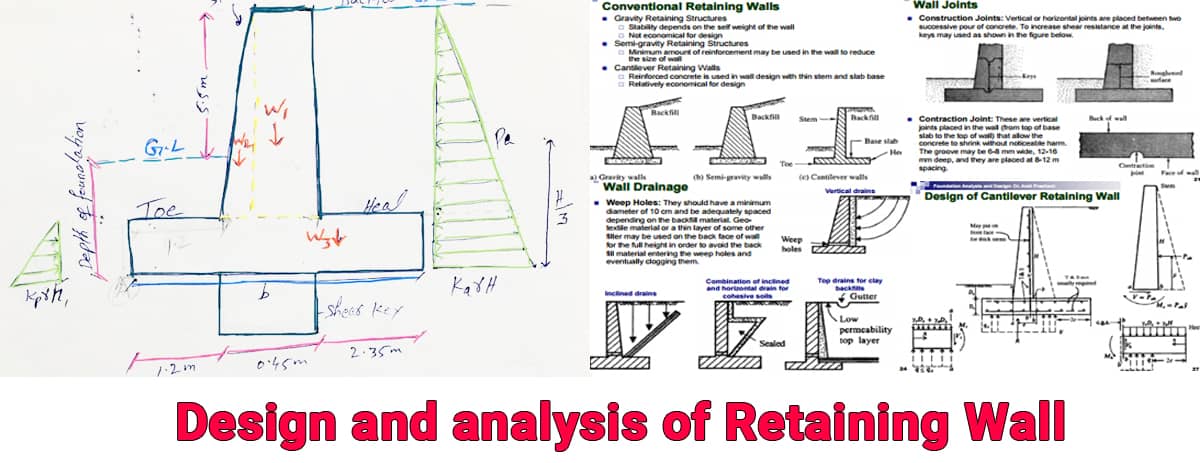Design and analysis of Retaining Wall

This development article presents some helpful methods for planning and analyzing holding divider for establishment.
Aspects of base from pressure contemplations
The base width b concerning the holding divider should be chosen cautiously all together that the proportion of length of the toe chunk to the base width ought to be kept up with in such a way that the pressure p1 at the toe ought not outperform the protected bearing limit of the dirt.
The Points covered
- Design for conventional retaining wall
- Retaining Wall Design & Proportioning
- Earth Pressure on Retaining Wall
- Equivalent Fluid Method
- Retaining Walls with backfill slope of finite distance
- Earth Pressure on Retaining Walls with backfill Slope of finite distance
- Stability of retaining wall
- Check Against Overturning
- Check Against Sliding
- Alternatives for improving FOS against sliding
- Check for bearing capacity failure
- Wall Joints
Drainage
- Wall Settlements
- Design of Cantilever Retaining Wall
This useful construction video shows the detailed process for two-tiered retaining wall design and installation. It belongs to Versalok retaining wall block, containing Willow Creek pavers for the sidewalk.
The project is completed in 3 days. The project consists of 8 tons of class 5 base, 12 pallets of block (about 15 tons worth), three pallets of pavers (4 tons or so), 6 tons of rock backfill for the walls, sod, and mulch.
The most crucial factor in perfect design and installation of retaining walls is to identify and resist the proneness of the retained material to go downslope because of gravity. This produces lateral earth pressure behind the wall on the basis of the angle of internal friction (phi) and the cohesive strength (c) of the retained material, in addition to the direction and magnitude of movement the retaining structure encounters.
This construction video will help you to plan, design and construct the exact retaining wall.
